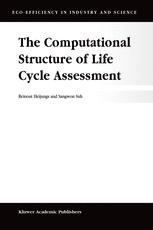

Most ebook files are in PDF format, so you can easily read them using various software such as Foxit Reader or directly on the Google Chrome browser.
Some ebook files are released by publishers in other formats such as .awz, .mobi, .epub, .fb2, etc. You may need to install specific software to read these formats on mobile/PC, such as Calibre.
Please read the tutorial at this link: https://ebookbell.com/faq
We offer FREE conversion to the popular formats you request; however, this may take some time. Therefore, right after payment, please email us, and we will try to provide the service as quickly as possible.
For some exceptional file formats or broken links (if any), please refrain from opening any disputes. Instead, email us first, and we will try to assist within a maximum of 6 hours.
EbookBell Team

4.8
14 reviewsLife Cycle assessment (LCA) is a tool for environmental decision-support in relation to products from the cradle to the grave. Until now, more emphasis has been put on the inclusion quantitative models and databases and on the design of guidebooks for applying LCA than on the integrative aspect of combining these models and data. This is a remarkable thing, since LCA in practice deals with thousands of quantitative data items that have to be combined in the correct manner. For this, one needs mathematical rules and algorithmic principles for carrying out an LCA.
This book presents the first coherent treatment of the mathematical and algorithmic aspects of LCA. These computational aspects are presented in matrix form, so that a concise and elegant formulation is achieved. This form, moreover, provides a platform for further extension of analysis using perturbation theory, structural theory and economic input-output analysis.